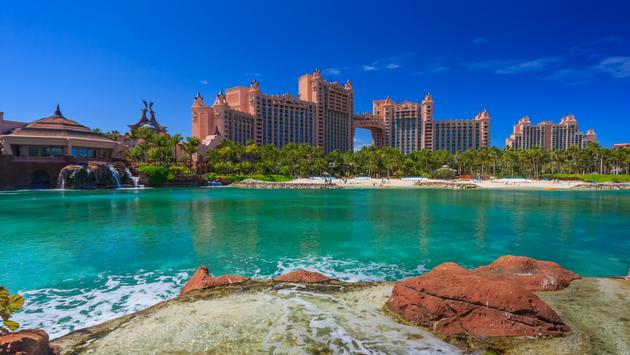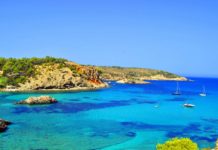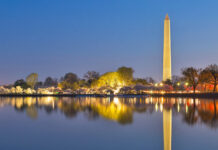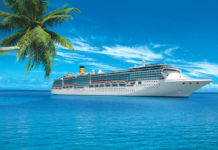This coral-based island chain is located in the beryl-blue waters of the Atlantic Ocean, yet all who are familiar with The Bahamas consider it a member of the Caribbean family. In most cases, The Bahamas means sun-soaked relaxation, duty-free shopping, unmatched ecological beauty and an endless supply of conch fritters. Days full of lounging on sugary-white beaches, dolphin encounters and exploring underwater reefs give way to breezy nights spent at Paradise Island casinos, sipping locally made rum drinks or enjoying Bahamian cuisine at an oceanfront restaurant.
The Bahamas consist of three main islands and a handful of Out Islands. Grand Bahama Island, Paradise Island and New Providence Island attract the most tourists year-round, and offer a range of accommodations from super-exclusive resorts to mid-range hotels. Lucayan National Park, on the island of Grand Bahama, is home to all six of the island’s natural ecosystems, including one of the longest underwater caves in the world.
The soul of New Providence Island, Nassau is a shopping and entertainment mecca. The high and low-end shops vie for your attention on Bay Street while hawking jewelry, perfume, liquor and souvenirs. This same energy is poured into the discos, bars and nightclubs that pulse along the streets after dark. Connected to New Providence by bridge, Paradise Island is a much smaller island dominated by the sprawling Las Vegas-style resort, Atlantis.
The Out Islands of The Bahamas, including Abacos, Cat Island, Bimini, Exuma and Harbor Island, are the smaller, quieter islands where many tourists go to seek the tranquil solitude of a genuine island getaway. These islands are not only ideal for relaxation and rejuvenation, but also boast some of the most spectacular and unspoiled gems of nature in the Caribbean.

Though a variety of international cuisine can be found on the islands, there are certain native dishes that are unique to The Bahamas. With a bounty of fresh seafood coming into restaurants daily, conch, land crab, crawfish, grouper and red snapper are favorites among locals and tourists alike. For a truly Bahamian experience on Nassau’s Cable Beach, check out Café Johnny Canoe for blackened grouper and guava cocktails. For an eclectic and creative menu serving everything from Cuban-style sea bass to New Zealand lamb, try the Ferry House on Grand Bahama Island. An upscale choice serving gourmet versions of local specialties on New Providence Island is Dune, which is open for breakfast, lunch and dinner.
The two largest airports in The Bahamas are Lynden Pindling International (NAS), located in the nation’s capital of Nassau on New Providence Island, and Grand Bahama International (FPO) in Freeport on Grand Bahama Island. Both serve international flights as well the local carrier, Bahamasair, that takes visitors to and from neighboring islands. From the airport there are shuttles, buses and taxis available to transport travelers. Taxis are accessible in all populated areas of the islands, as well as jitney buses that cost 75 cents each way, and make several stops along Grand Bahama and Paradise Island. The Bahamas is also the most popular port of call for cruise ships in the Caribbean. Nassau and Freeport are well served by cruise ships, and always garner a stead influx of day-tripping visitors.
With a tropical marine climate, The Bahamas enjoys seasonably warm and pleasant weather year-round. There are two seasons — summer, which from May through September and averages in the low to mid-80s°F, and winter, which lasts from October through April and usually never drops below 60°F. The rainy season shows up in the late summer months, with an occasional tropical storm or hurricane touching down from late June through November. The summer months can be fairly humid, and therefore the peak season to visit is during the winter (mid-December to mid-April). When traveling in the off-season, rates can be slashed from 20 to 60 percent.















